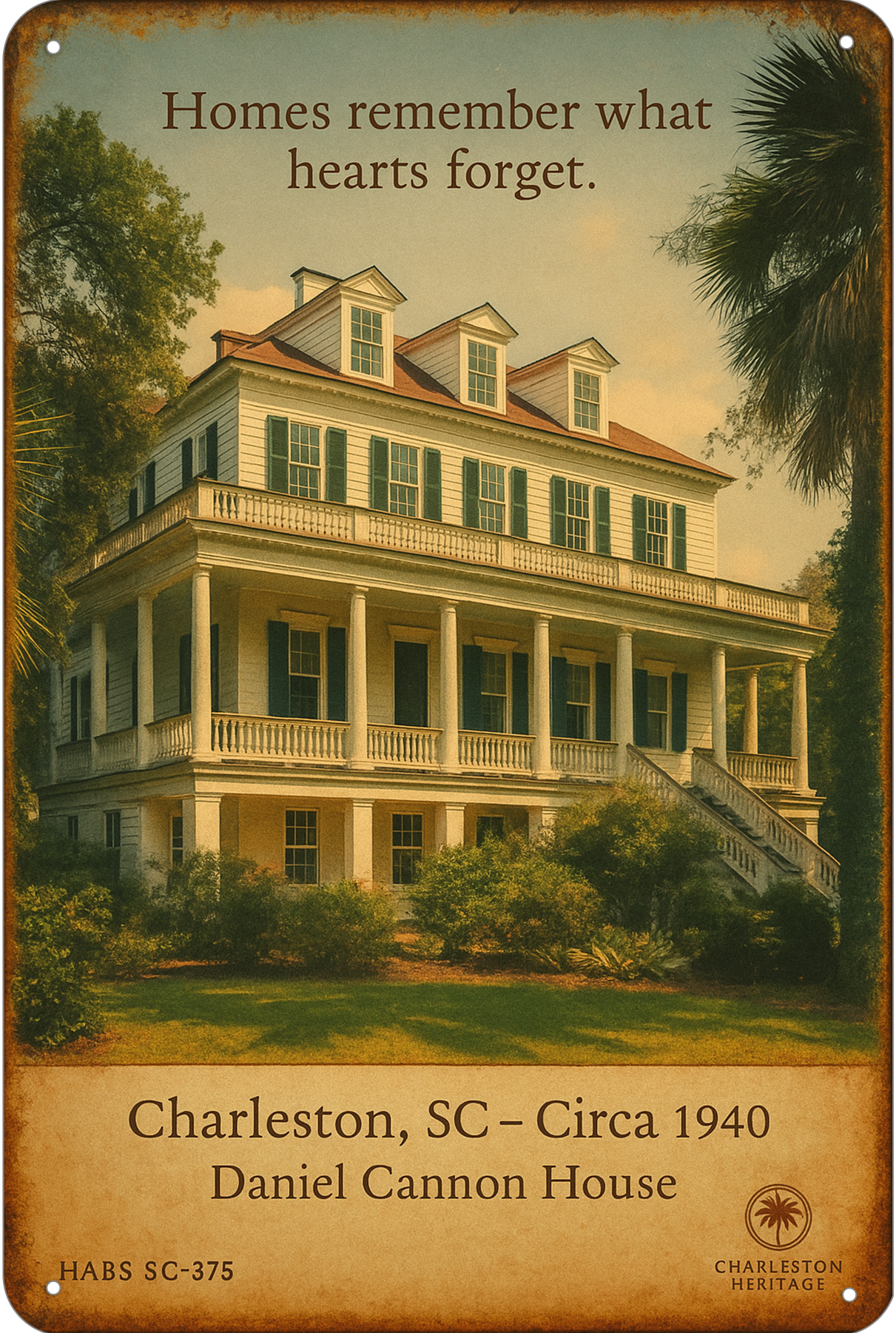Made with high quality Tin sign , size 8×12 in. with 4 predrilled small holes on the corns
Daniel Cannon (c. 1700s) was a wealthy carpenter, planter, and entrepreneur in colonial Charleston.
He acquired large tracts of land north of the city during the mid-18th century.
His lands later became the Cannonborough neighborhood (hence the name “Cannon Street” and “Cannonborough”).
Location: 31 George Street, Charleston, SC.
Built: Around 1800, after Cannon’s death (he died in 1802, but his family completed or occupied it).
Architecture: Large Georgian double house, three stories over a raised basement.
Use: Residence of Daniel Cannon and his heirs; symbol of his success as a carpenter who rose to planter-class wealth.
The house is directly tied to the transformation of Cannonborough from rural landholdings into a structured Charleston neighborhood.
Daniel Cannon was unusual for his time: a skilled artisan who managed to cross into planter society.
The Cannon House is one of the finest surviving Federal-era residences in that part of the city.
Today, it’s preserved as part of Charleston’s protected historic homes.
Made with high quality Tin sign , size 8×12 in. with 4 predrilled small holes on the corns
Daniel Cannon (c. 1700s) was a wealthy carpenter, planter, and entrepreneur in colonial Charleston.
He acquired large tracts of land north of the city during the mid-18th century.
His lands later became the Cannonborough neighborhood (hence the name “Cannon Street” and “Cannonborough”).
Location: 31 George Street, Charleston, SC.
Built: Around 1800, after Cannon’s death (he died in 1802, but his family completed or occupied it).
Architecture: Large Georgian double house, three stories over a raised basement.
Use: Residence of Daniel Cannon and his heirs; symbol of his success as a carpenter who rose to planter-class wealth.
The house is directly tied to the transformation of Cannonborough from rural landholdings into a structured Charleston neighborhood.
Daniel Cannon was unusual for his time: a skilled artisan who managed to cross into planter society.
The Cannon House is one of the finest surviving Federal-era residences in that part of the city.
Today, it’s preserved as part of Charleston’s protected historic homes.
